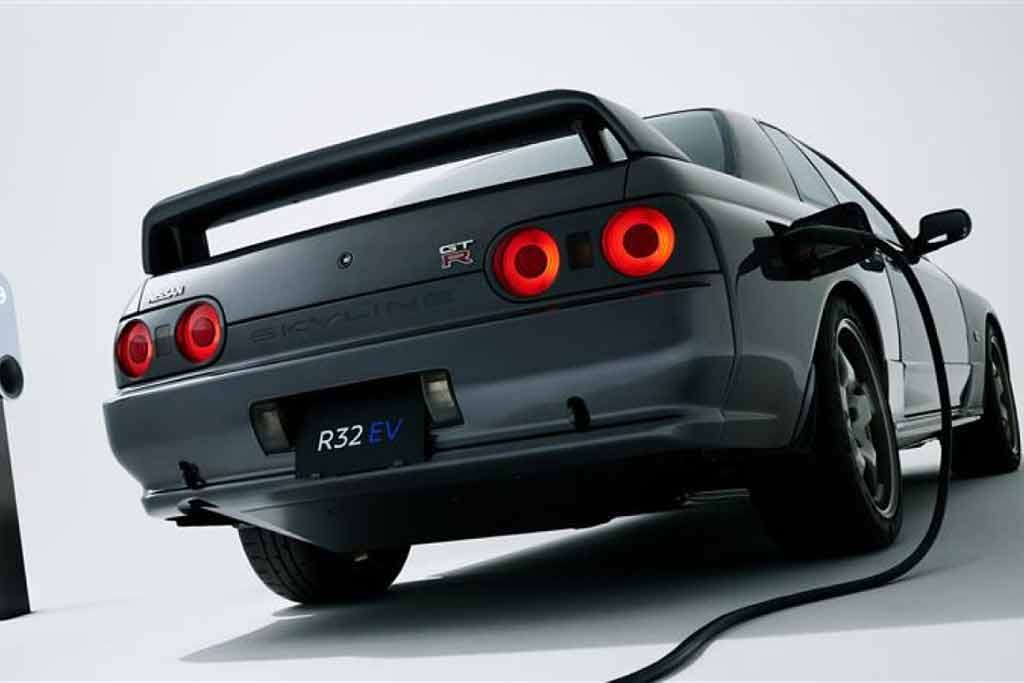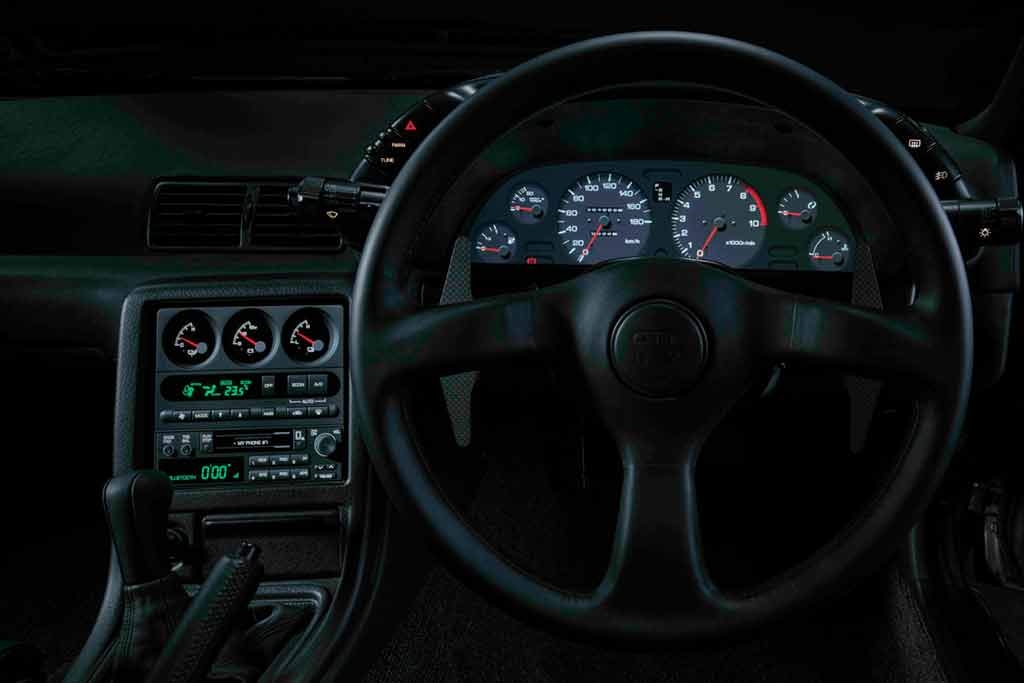Nissan reimagines and electrifies the iconic R32
16 Jan 2025|926 views
What do you get when you combine a small team of passionate engineers, one of Nissan's iconic performance cars, and the latest EV technology? That question was answered at the 2025 Tokyo Auto Salon, which runs from 10 January 2025 to 12 January 2025, when Nissan unveiled its one-off R32 EV conversion.
Born out of a passion project by a group of adventurous Nissan teammates in Japan and headed by long-time Nissan EV powertrain engineer Ryozo Hiraku, it was his decision to electrify a car he revered and wanted to ensure could be driven for decades to come.
Finished in Gun Grey metallic, the team aimed to reproduce the prowess of the 2.6-litre twin-turbo engine by installing a pair of 160kW (215bhp) electric motors, each capable of delivering up to 340Nm of torque. The R32 EV's rear seat was also removed and in its place, a 62kWh battery borrowed from the Leaf NISMO RC02. With the car’s ongoing development, the team hopes to match the performance of the original R32, which produced 206kW (276bhp) and 353Nm of torque.
On its debut 35 years ago, Nissan's ATTESA E-TS all-wheel drive system ensured the original R32 delivered impressive all-weather traction and stability. With a hydraulically actuated clutch system, it could divide torque up to 50:50 between the front and rear wheels. However, with an array of modern sensors and an absence of mechanical components like clutches, the dual electric motors in the R32 EV can respond faster and distribute torque between the front and rear wheels with greater precision.
The team also sought to replicate the sensory engagement of the original R32 by implementing paddle shift functionality, with a cabin speaker piping in sound inspired by the original RB26DETT engine note. To ensure optimal stopping power, larger rotors and monoblock callipers were sourced from the R35 GT-R, with 18-inch wheels accommodating the larger discs and meatier callipers.
Inside the R32 EV's cabin, the goal was to keep things as original as possible while upgrading key items to enhance the driver's experience. Hence, the factory seats were changed to custom Recaros, and the double DIN audio, gauges, and metre cluster received high-resolution digital screens providing key driver information while retaining their original profile.
With the fabrication and assembly stages complete, Hiraku and the team can now focus on tuning and dynamic development. As of yet, there are no plans to commercialise the R32 EV or offer a conversion kit.
What do you get when you combine a small team of passionate engineers, one of Nissan's iconic performance cars, and the latest EV technology? That question was answered at the 2025 Tokyo Auto Salon, which runs from 10 January 2025 to 12 January 2025, when Nissan unveiled its one-off R32 EV conversion.
Born out of a passion project by a group of adventurous Nissan teammates in Japan and headed by long-time Nissan EV powertrain engineer Ryozo Hiraku, it was his decision to electrify a car he revered and wanted to ensure could be driven for decades to come.
Finished in Gun Grey metallic, the team aimed to reproduce the prowess of the 2.6-litre twin-turbo engine by installing a pair of 160kW (215bhp) electric motors, each capable of delivering up to 340Nm of torque. The R32 EV's rear seat was also removed and in its place, a 62kWh battery borrowed from the Leaf NISMO RC02. With the car’s ongoing development, the team hopes to match the performance of the original R32, which produced 206kW (276bhp) and 353Nm of torque.
On its debut 35 years ago, Nissan's ATTESA E-TS all-wheel drive system ensured the original R32 delivered impressive all-weather traction and stability. With a hydraulically actuated clutch system, it could divide torque up to 50:50 between the front and rear wheels. However, with an array of modern sensors and an absence of mechanical components like clutches, the dual electric motors in the R32 EV can respond faster and distribute torque between the front and rear wheels with greater precision.
The team also sought to replicate the sensory engagement of the original R32 by implementing paddle shift functionality, with a cabin speaker piping in sound inspired by the original RB26DETT engine note. To ensure optimal stopping power, larger rotors and monoblock callipers were sourced from the R35 GT-R, with 18-inch wheels accommodating the larger discs and meatier callipers.
Inside the R32 EV's cabin, the goal was to keep things as original as possible while upgrading key items to enhance the driver's experience. Hence, the factory seats were changed to custom Recaros, and the double DIN audio, gauges, and metre cluster received high-resolution digital screens providing key driver information while retaining their original profile.
With the fabrication and assembly stages complete, Hiraku and the team can now focus on tuning and dynamic development. As of yet, there are no plans to commercialise the R32 EV or offer a conversion kit.
Latest COE Prices
September 2025 | 2nd BIDDING
NEXT TENDER: 08 Oct 2025
CAT A$119,003
CAT B$136,890
CAT C$72,501
CAT E$140,502
View Full Results Thank You For Your Subscription.




























